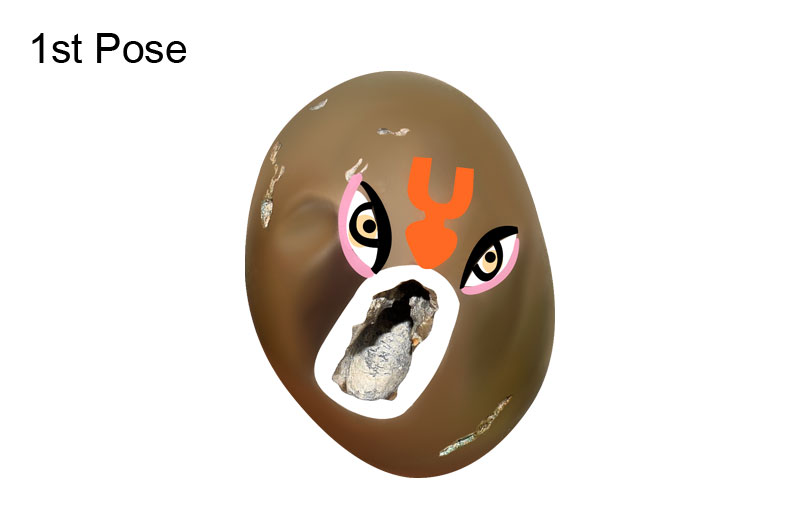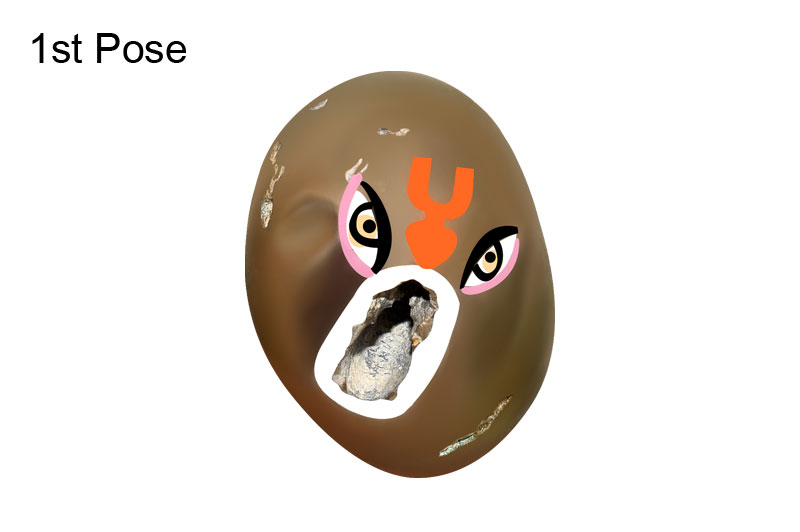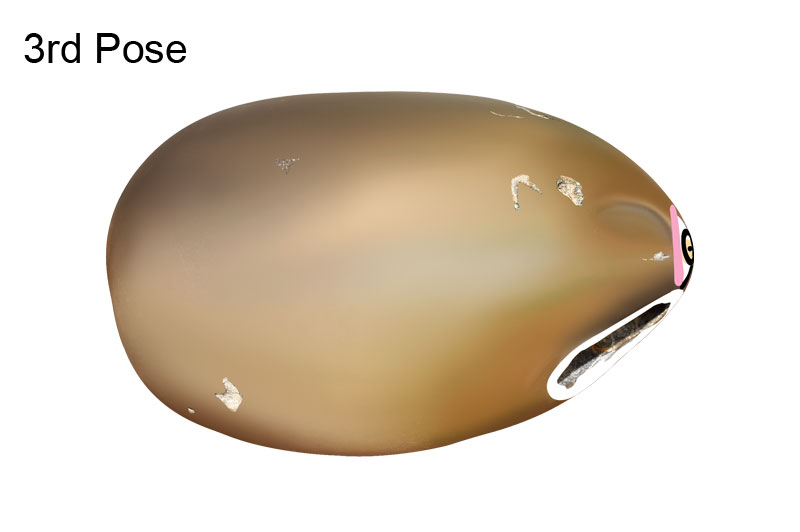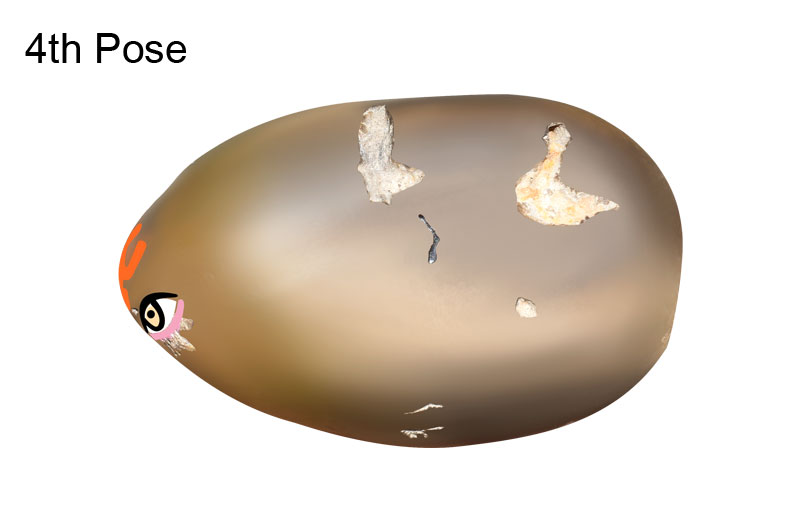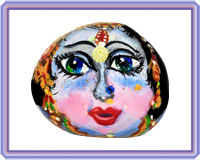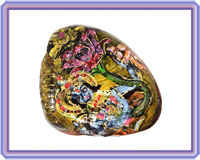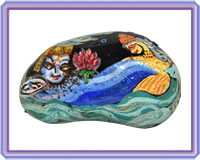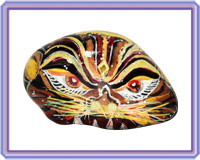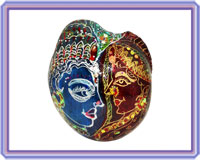Decorated Painted Shaligram Shila
The tradition of decorating painted Shaligram Shilas is a beautiful way to deepen ones connection with the divine. This practice combines devotion, artistry, and cultural heritage, allowing devotees to express their love and reverence for Lord Vishnu. Whether adorned simply or elaborately, the Shaligram Shila remains a powerful symbol of divinity and a centerpiece of spiritual practice. The practice of decorating and painting Shaligram Shilas has grown in popularity, adding an artistic and devotional dimension to their spiritual significance.
Origins and Significance of Shaligram Shila
Shaligram Shila, a sacred fossilized ammonite stone, holds immense spiritual significance in Hinduism, particularly in the worship of Lord Vishnu. Found primarily in the Gandaki River of Nepal, these stones are revered as naturally manifested representations of the divine. Shaligram Shilas are believed to be manifestations of Lord Vishnu. According to Hindu scriptures, they symbolize the eternal presence of the deity and are considered self-manifested (Swayambhu). These stones are naturally formed with intricate patterns and markings, often resembling symbols such as the chakra (disc) and shankha (conch), further enhancing their sanctity.Benefits of Decorated Shaligram Shila
Decorating and worshiping Shaligram Shila offers numerous benefits, both spiritual and practical. These include:Spiritual Growth: The Shila serves as a conduit for divine energy, helping devotees attain spiritual clarity and peace.
Blessings and Prosperity: Worshiping the Shaligram is believed to attract blessings, wealth, and harmony into the devotees life.
Protection: It is said to ward off negative energies and provide a protective shield for the household.
Enhanced Devotion: The act of decorating the Shila fosters a deeper emotional and spiritual connection with Lord Vishnu.
Cultural Preservation: Engaging in this practice helps preserve traditional rituals and artistic expressions associated with Hindu worship.
The Art of Decoration
Decorating a Shaligram Shila is a devotional practice that involves adorning the stone with paint, jewels, or embellishments. This practice elevates the natural beauty of the stone and reflects the devotees love and reverence for the deity. Common elements of decoration include:Painting: Vibrant, non-toxic paints are used to highlight the natural features of the stone, such as the chakra or other divine symbols.
Ornamentation: Devotees may add gold or silver ornaments, crowns, or miniature jewelry to represent the deitys grandeur.
Fabric Adornments: Tiny pieces of silk or cotton cloth are draped around the Shila as a gesture of respect and devotion.
Ritual and Worship of Decorated Painted Shaligram
The decorated Shaligram Shila is placed on an altar and worshiped daily. The rituals often include bathing the Shila with sacred substances like milk, water, honey, and ghee (Panchamrit Abhishek). Devotees offer flowers, incense, and food (Naivedya) while chanting Vishnu mantras or stotras. The decorations are refreshed periodically, especially during festivals like Janmashtami or Diwali.Spiritual and Aesthetic Value
Decorating the Shaligram Shila bridges spirituality and artistry. For devotees, the process is meditative and a form of seva (service) to the divine. The adorned Shila becomes a focal point of the puja space, inspiring devotion and enhancing the ambiance with its aesthetic appeal.Guidelines for Decorated Shilas
Purity: All materials used must be clean and pure, as the Shila is a sacred object.Respect: The decorations should be tasteful and aligned with traditional values, avoiding over-commercialization.
Intent: The act of decoration should be performed with a pure heart and devotional intent, prioritizing the spiritual significance over mere aesthetics.
 Google has chosen Shaligram Shala ( shaligram.com) as the world's first 5 star
Google has chosen Shaligram Shala ( shaligram.com) as the world's first 5 star  rated Rudraksha supplying Company
rated Rudraksha supplying Company 

